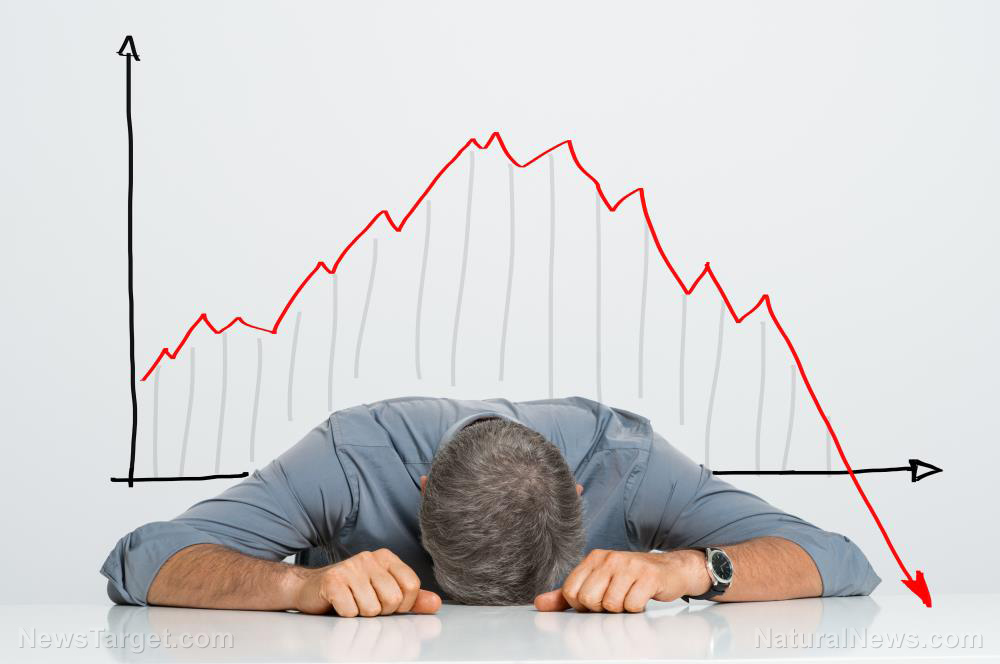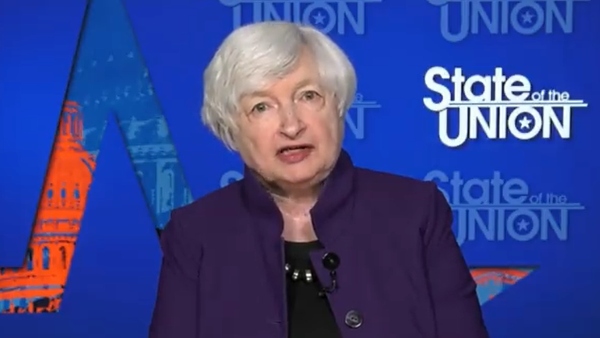 Parler
Parler Gab
Gab
Recent data over the past week has challenged [the soft-landing] narrative. January inflation reports from the Consumer Price Index (CPI) and Producer Price Index (PPI) showed prices increased more than economists projected in the last month. And the January retail sales report showed sales dropped by more than economists had expected. In other words, neither inflation nor consumer strength improved.While one person in the article just quoted says to pay no attention to the man behind the curtain, another notes these are real concerns. We’ll stay with a quote from the more intelligent one as the unintelligent ones get WAY more time in the mainstream press than they ever deserve anyway:
The growing economic consensus has hit a bump in the road. …The recent string of January data is notable because it's largely the first chunk of data to challenge the soft landing narrative since Federal Reserve Chair Jerome Powell hinted the US economy may be headed to the ideal outcome during the December Fed meeting. "The data is stacking up against investors in a way that's making people more nervous," SoFi head of investment strategy Liz Young told Yahoo Finance Live. After this week though, economists are cutting their projections for first quarter gross domestic product (GDP), a popular economic growth measure. Goldman Sachs has shifted its forecast from 2.9% annualized growth in the first quarter entering the week down to 2.3%. The Atlanta Fed's GDP tracker moved down to 2.9% from a 3.4% projection on Feb. 8. Not auspicious for the economic growth component of a soft landing.In other worse, where I have repeatedly said that, whenever Gross Domestic Income (GDI) runs the opposite of GDP (as GDI has been in recession for months now), it is always GDP that corrects to come in line with GDI. So, now we see GDP inching downward in the direction of GDI. Likewise, with inflation, which I’ve predicted you would see crowding back upward. Now the mainstream economists that everyone listens to have turned their tales and are finally writing in my direction. Inflation is going back up:
The data is also moving projections for Personal Consumption Expenditures (PCE), the Fed's preferred inflation gauge, ahead of its release later this month. Goldman now projects core PCE, which excludes the volatile food and energy categories, increased 0.43% in January, an increase from its prior forecast of 0.35%. Bank of America's economics team also sees a reading near 0.4%…. Not auspicious for the second component of a soft landing.This is why I say The Daily Doom gives you the news before it happens. I predicted those moves at the start of last year for later in the year and started reporting last summer on the areas where you could see them incrementally creeping back into the data, saying eventually they would break the surface. Now they have done so noticeably enough that the mainstream media is capable of seeing those moves, too. That, or they always were capable, but just didn’t have to report it until it started becoming this obvious. For the most part, I think the writers are chickens or not too thoughtful who just parrot what they are being told. These are now the big people who are joining my marginal (at best) voice:
"While January data are often noisy, the inflation data do suggest that disinflation took two steps back in January," Bank of America US economists Stephen Juneau and Michael Gapen wrote in a note to clients on Friday.I agree that January data are often noisy, and I don’t expect the big changes from January to continue in such a pronounced way. Jobs will probably revert back to the kinds of government-fogged readings we’ve had, while inflation will continue to rise. GDP, supremely pumped up by fascist economics as it is, will have a hard time going actually negative to match down to the far more truthful GDI (where I found others in agreement in my last Deeper Dive). Almost no one believes in March or May rate cuts anymore, and June may be ambitious, unless the economy blows up in March, which is far from unlikely; but that is a whole different kind of pivot than the one that markets have fantasized for. That means grave economic disruption of the kind that is never good for markets—not the soft-landing stuff that dreams are made of. In fact, the change in narrative has swept so strongly in the direction I’ve said things would go that even Zero Hedge, proponent of the “Fed pivot” for well over a year and half, has joined me on the surprising claim I made in my last Goldseek Radio interview and repeated in the one that will be published next: The Fed is far more likely to raise rates in March than cut them. ZH is the only other publication I know now venturing that possibility. You probably won’t be able to read the article because it is available only to their premium subscribers (and I am not one), but I think we can get the gist of it from the title: “Is The Fed's Next Move A Rate Hike?” My surprising (I think stand-alone) claim in those radio interviews was that a March rate hike was FAR more likely than a March rate cut, though I also said I doubted the Fed had the nerve to do that; but that is what its data and the market mania will be telling it it should do. Nice to see ZH finally on board with me, though they still couldn’t resist saying in the lead-in to that article that Powell had made a “stunning dovish pivot” in his November speech. Read more at: TheDailyDoom.com
Jerusalem Post: “Antisemitism must be criminalized before it’s too late”
By News Editors // Share
West destroying its own financial system – Putin
By News Editors // Share
Governments continue to obscure COVID-19 vaccine data amid rising concerns over excess deaths
By patricklewis // Share
Tech giant Microsoft backs EXTINCTION with its support of carbon capture programs
By ramontomeydw // Share
Germany to resume arms exports to Israel despite repeated ceasefire violations
By isabelle // Share










